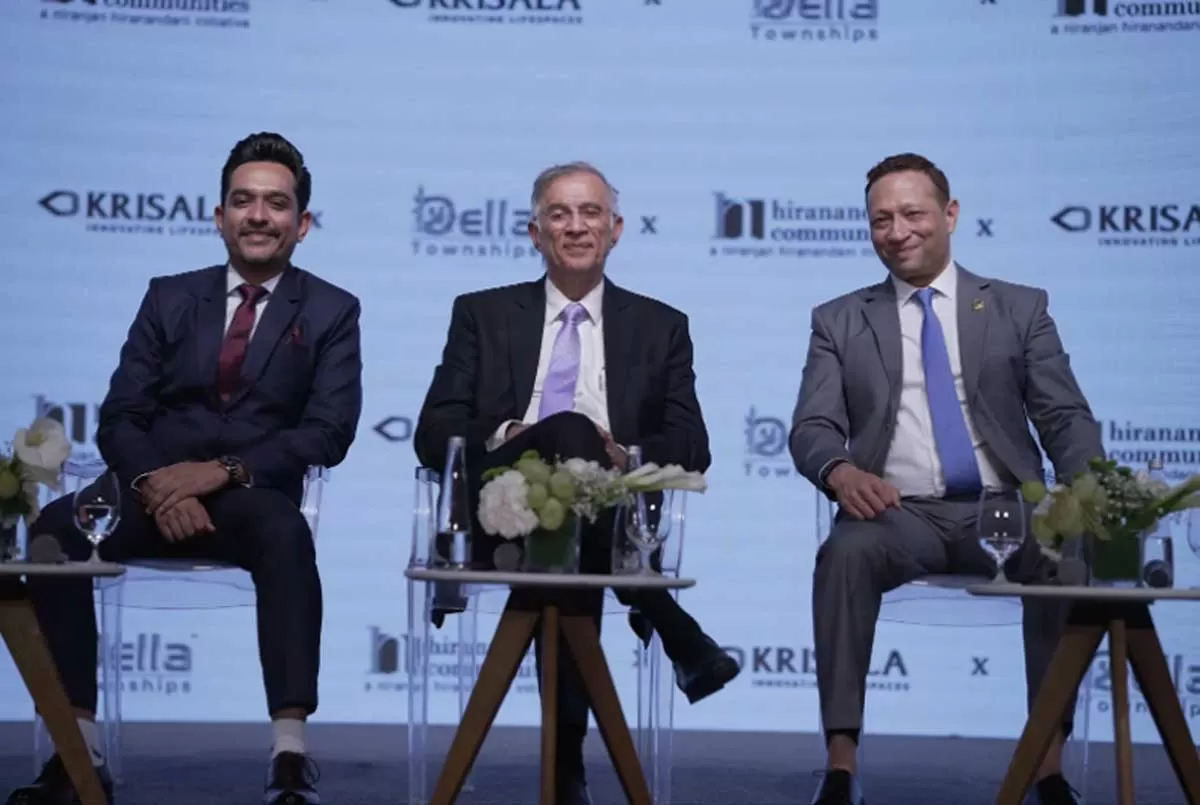India has the second largest road network in the world at 4.7 million km. Following a muted response for BOT projects in FY13 and FY14, the sector has witnessed a shift, with the NHAI moving towards the EPC or cash contract mode of bidding. In March 2015,
Nitin Gadkari, Minister, Ministry of Road Transport & Highways (MoRTH), told CW: ¨We will release projects worth Rs 500,000 crore in the next five years.¨ Indeed, the Indian Government plans to develop a total of 66,117 km of roads under different programmes such as the National Highways Development Project, Special Accelerated Road Development Programme in North East and Left Wing Extremism, and has set an objective of building 30 km a day from 2016. Ambitious announcements certainly, but is the sector back on the move?
Report card
Project delays, stretched balance sheets and inherent risks in highway assets have resulted in fewer-than-expected takers for projects. The pace of awarding projects has also been slow with 46, 10 and 14 projects awarded in 2012, 2013 and 2014, respectively. According to a report by India Ratings & Research (FY2016 Outlook: Infrastructure & Project Finance), MoRTH has been off the targets set for each financial year, similar to the trend observed in FY14.
Also, according to the NHAI website, as of January 2015, 79 National Highway (NH) projects of 9,048 km length have been awarded, but work was yet to begin. Excluding projects awarded recently, around 64 NH projects covering ~7,600 km are estimated to be stalled. Shubham Jain, Vice President, ICRA, says, ¨Close to 9,000 km - around 80 NH projects - are still facing issues. The roads sector will need funds in excess of Rs 1.6 trillion over the next three years, from FY16 to FY18, to fund NHs alone.¨
The challenges
Execution capability is a major issue. The period of 2007-2012 was witness to aggressive bidding where bids were made at such high negative premiums that, finally, major contractors backed out. Developers have gone really aggressive while bidding both in terms of their execution capability and balance sheet strength, which is now biting them hard. Another issue is lack of a clear arbitration mechanism in place on the NHAI side. So again, there are significant claims that are outstanding.
Also, while arranging equipment is not an issue, skilled manpower is. Additionally, the availability of funds is another concern. Suparna Chattopadhyay, Head-Capex, CMIE, reasons, ¨As many projects were awarded during the economic boom, the bids had big royalty for NHAI. But with the slowdown, the projects became unviable.¨
To this, RS Ramasubramaniam, Co-Chairman, Feedback Infra Pvt Ltd, raises a question: Will banks really be in a position to move? The larger question is: Where is the capital with the bank? He points to delay in clearances as a big bottleneck that leaves the contractor helpless - he is ready with the necessary equipment, funds and labour, and is paying interest for the delay. Ramasubramaniam further highlights that this year´s Budget set aside a total of Rs 75,000-80,000 crore between railways and highways, of which some Rs 45,000 crore is expected to come to highways. If that happens, we get some traction and EPC can be bid out, medium-level players and new players could emerge in the highways sector. ¨From the recently set 30 km per day, I feel that achieving even 12-14 km per day is a challenge in the present circumstances,¨ he says.
Contractor zone
How are contractors reacting to the present scenario?
B Seenaiah, Managing Director, BSCPL Infrastructure, confirms that the company has bagged two small road contracts - projects worth between Rs 150 crore and Rs 300 crore - in the past 10 months. Having received the advances recently for the same, and with his own equipment fleet, he hopes to start the projects in another two months. However, funding and labour are two big issues. ¨We need to wait for another eight to nine months to see how the awarded contracts progress,¨ he says, adding that he views unhealthy competition - owing to aggressive bidding - as another major concern.
For his part, Goutham Reddy, Executive Director, Ramky Infrastructure Ltd, shares that the company has currently executed over five BOT projects. Although clearances are in place for these, they either have time or cost (especially cost) overruns. In the case of an EPC contract, ¨It takes closer to eight to nine months to start a project after it is awarded,¨ he says. The company did not bid for any project in the recent past - why? ¨There may be over a million contractors in the country and bids will always be floated,¨ responds Reddy. ¨But the competency to build large infrastructure will always be contained with the top 20-30 companies and most of these companies are suffering quite harshly.¨S Ramnath, CFO, ITD Cementation India, confirms that the company has decided to keep off roads projects. ¨Between 2002 and 2012, we executed 10 projects for NHAI, on each of which we lost heavily,¨ he says. Availability of funds to work has been the single serious problem for the company, leading to project delays. Availability of labour is another challenge. ¨We ensure that the contract labour is in place before starting a project,¨ says Ramnath. ¨But if you have taken up a road project for two to three years, the cost of labour suddenly goes up and this is challenging.¨
Recent developments
Some significant developments have been observed over the past few months. Jain says, ¨One major development is that the government is awarding projects only after receiving all the related approvals.¨ He agrees that there have been delays owing to lack of environment approvals and Right of Way (RoW). However, from May 2014 onwards, for close to 50-60 per cent of the total EPC contracts awarded, land has been acquired prior to the award. Other initiatives include online filing for clearances to construct rail over-bridges and under-bridges, and increase in the limits for sand mining, both major bottlenecks earlier. Also, the new PPP format, which has been proposed on the hybrid annuity model, is a step in the right direction. In this mix of the EPC and BOT annuity models, the government will fund close to 40 per cent of total project cost with the remaining 60 per cent funded by the private entity. So now the private entity has to only look to achieve financial closure for 60 per cent of the total cost, reducing its financial burden.
Chattopadhyay adds, ¨Budgetary allocations for roads have been increased. A road monitoring group has been established under MoRTH called National Highway and Infrastructure Development Corporation to develop projects along India´s international borders.¨ Also, delinking of forest from environment clearance has helped. Hence, while not much has been seen in the last fiscal, with these developments and more, the first two quarters of this fiscal are expected to see positive results on the execution front in addition to projects being awarded.
ROADS: CW´S RECOMMENDATIONS
- According to the Indian system, the lowest bidder is awarded the work. However, if the average of all the bids is considered, and if the work is awarded to whoever meets the average cost requirement, executing a project could be easier.
- Once the Land Bill is passed, the problem of land acquisition could be eased. As the compensation in the Bill is better, land owners will come forward automatically to give their land.
- Contractors can initiate training institutes to ensure skilled manpower.
- Considering the huge conflict, that the regulator is the awarding authority itself, setting up a proper regulatory mechanism could definitely help the sector.
- NHAI should include detailed financial parameters while releasing a list of eligible contractors to bid for projects. This will ensure the financial health of the bidding company and avoid projects getting stalled midway.
- Promoters should conduct a viability study for a project before bidding for it. Proper planning will empower the locals and make a difference.
- The exit policy needs to be acted upon.
- Banks should be forced to step in, exit current non-performing promoters, and bring in a whole new breed of promoters who can sell or auction those stakes.
- NHAI should be made responsible for the execution of projects; disputes should be settled through arbitration. NHAI should accept arbitration awards and not go to the courts.
- The government has to pragmatically accept cause of delay on its end - which may include clearances, land acquisition, railway permissions, and so on - and convert it to financial terms in the form of compensation.
| Targets and performance |
| Parameter | Target
(2014-15) | Achievement
(April-October 2014) |
| Road length to be awarded (km) |
8,500 |
3,419 |
| Completion of construction (km) |
6,300 |
1,984 |
| Highway length tolled (km) |
3,730 |
435 |
| Collection of toll revenue by NHAI (Rs. mn) |
65,000 |
35,840 |
| Source: MoRTH website |


















